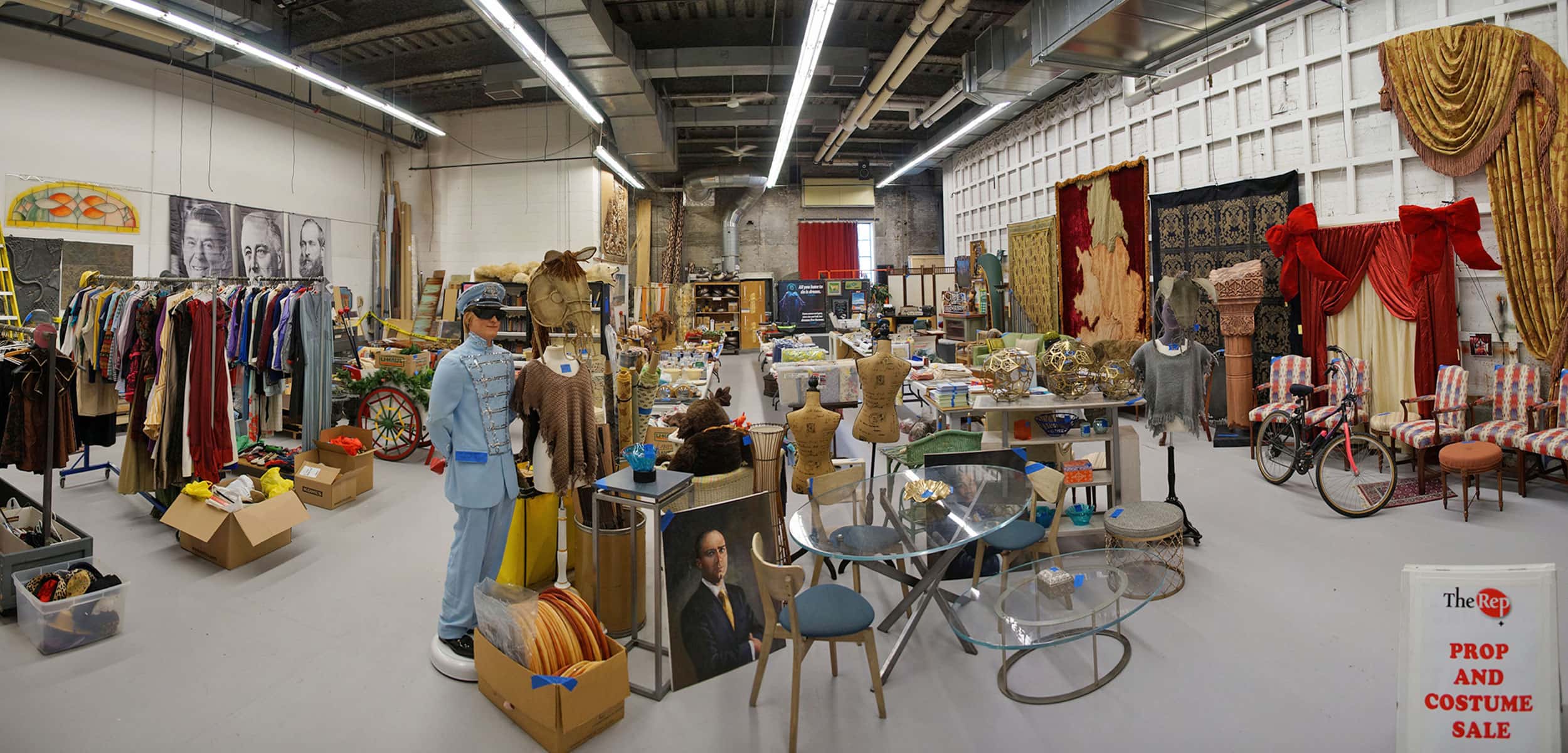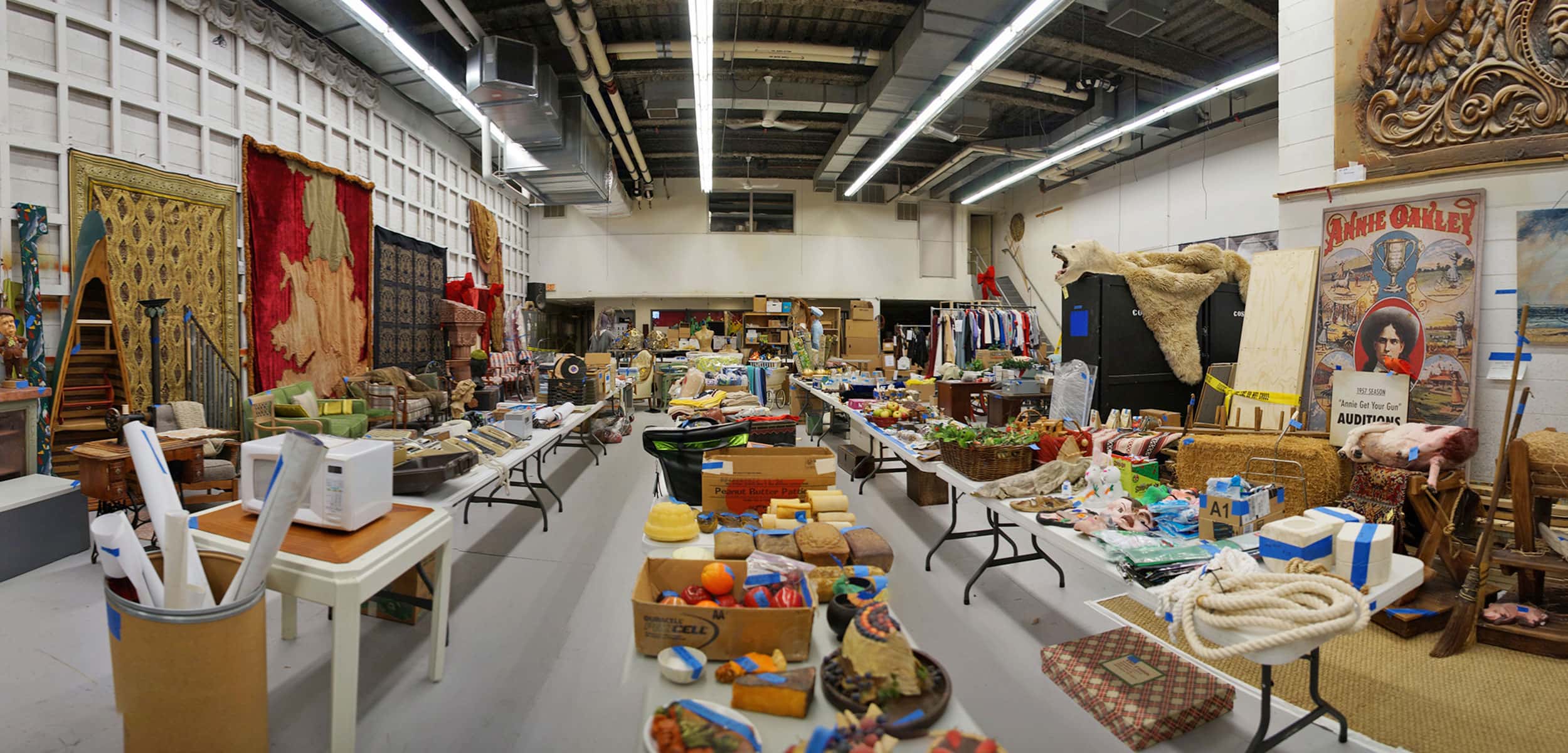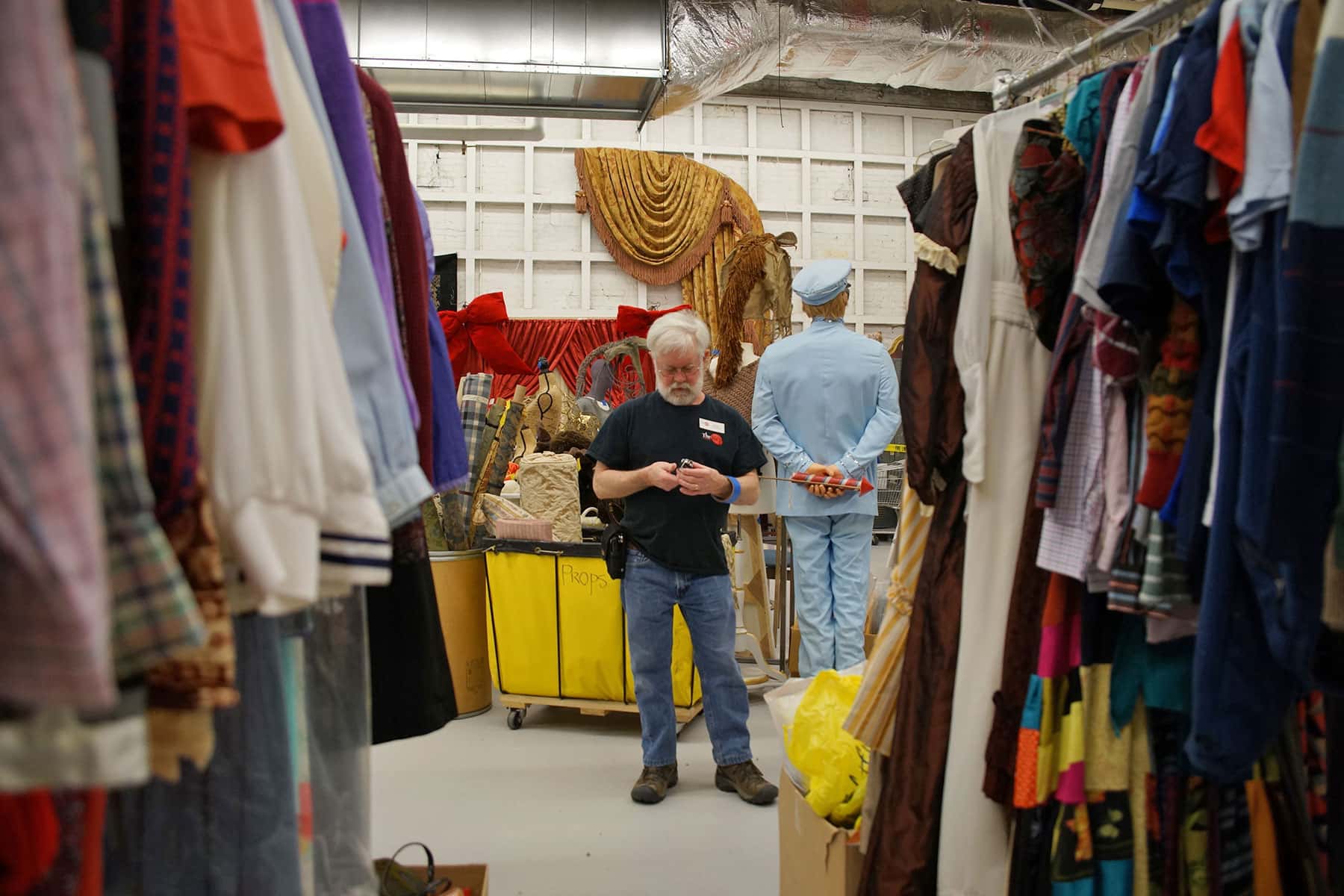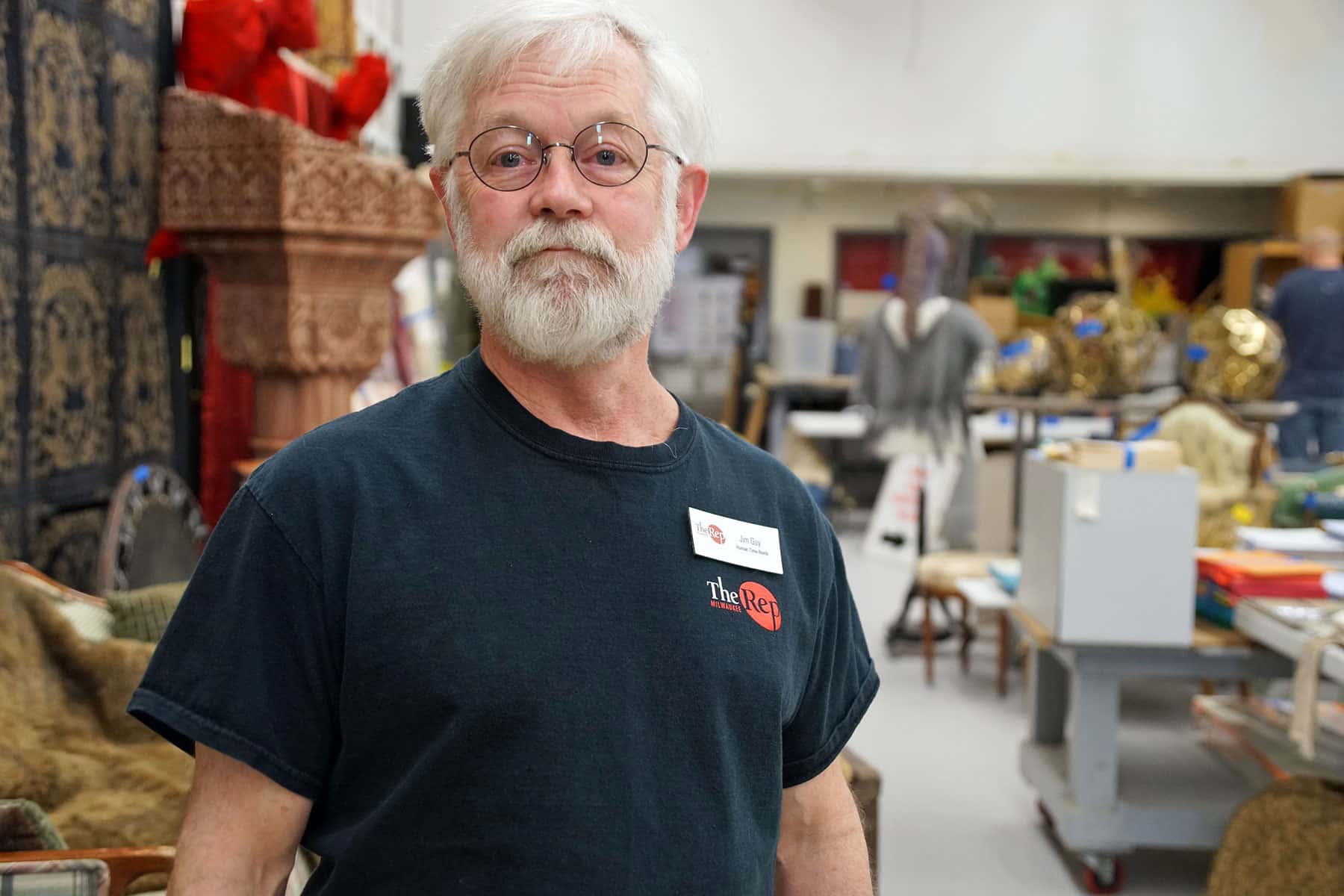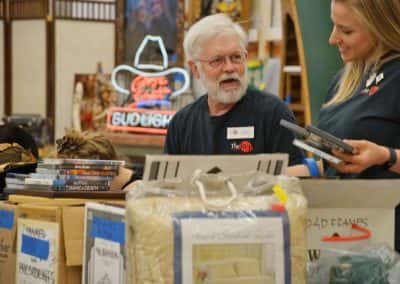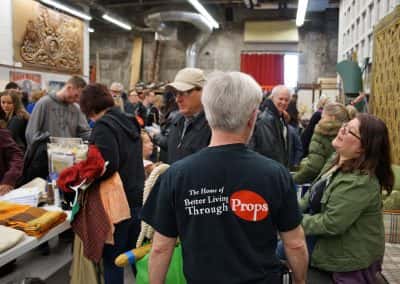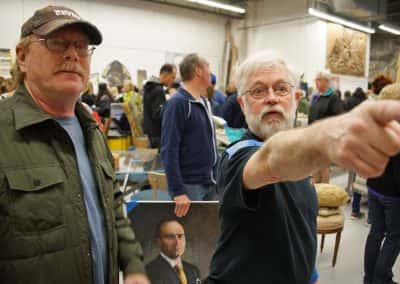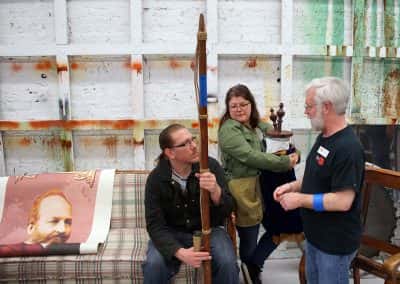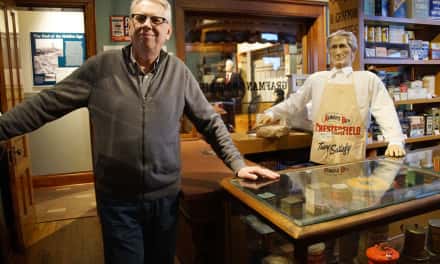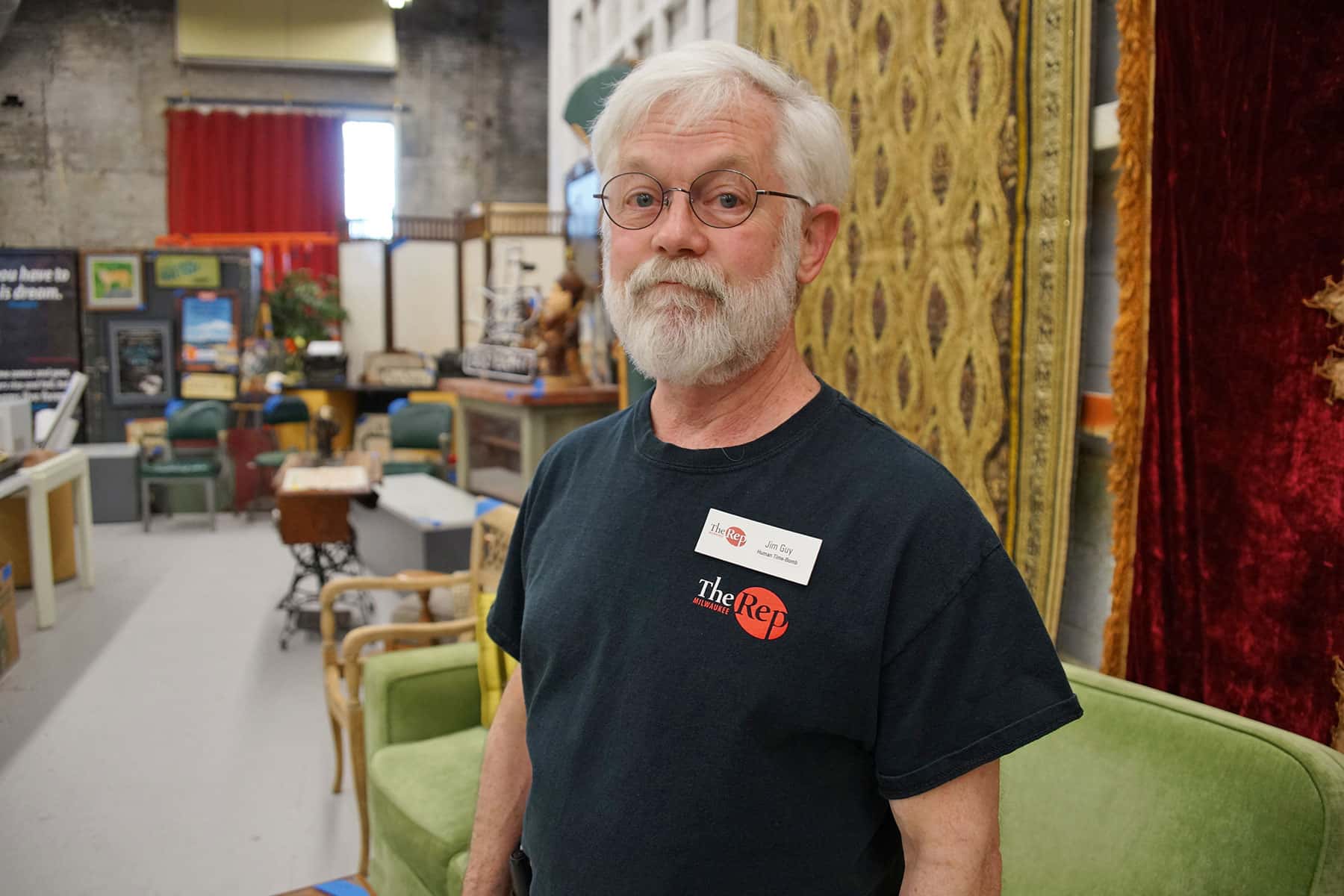
The average garage sale offers unique trinkets from the life of a neighborhood family. Multiply that a few times, and it starts to come close to the accumulation of things by Milwaukee’s largest theater company.
Except for experimental theater, rarely does an audience expect to see an empty stage with naked actors. The performers do get all the attention on stage, but their craft would be incomplete without props. From simple objects and costumes, to elaborate sets, props are a vital part of the live theater experience.
Since 1998, Jim Guy has been producing these important visual elements for the Milwaukee Repertory Theater. As properties director, Guy creates the fantastical items needed for the every shows
On April 29, The Milwaukee Rep had its annual Prop and Costume Sale. This year, because the event was not held in 2016, there was two years of inventory that could no longer be held in warehouse space.
Costumes, shoes, accessories, fabric, set decorations, furniture, draperies, surplus tools, materials, stage equipments and specialty items from past productions were all on clearance at garage sale prices.
Before the doors opened to the public for the massively popular garage sale that attracted hundreds of shoppers, the Milwaukee Independent was able to ask Jim Guy a few questions about the event and his role as Props Master.
Q&A with Jim Guy
Q: Can you tell me about the purpose of today’s event at The Rep?
A: Today is the prop and costume garage sale at Milwaukee Repertory Theater. We have the paint shop packed with stuff because generally this has been an annual event, where our two departments – props and costumes – cull their stock. We run out of storage space and we sell things off basically at garage sale prices. But it is not your average garage sale, unless you like lifesize mannequins in sequin chauffeur uniforms and polar bear rugs with the middles cut out of them.
We couldn’t hold a sale last year because we started building A Christmas Carol from March. So every square inch of this building was just packed with holiday joy, and there was no place to put the sale. So this is two years worth of accumulation.
Co-productions that we’ve done, if they end here, often our co-producer tells us to just keep the stuff. We keep the things we can use and put into stock. But as often as not, things that we make for shows are so specific to that show there is no reason to keep it in stock, unless we think we’re going to do the show again. Otherwise, we would have to design a show around the items.
For our clearance sales event, we do get people from other theater groups, educational, community, and professional groups. I know a former student of mine who is a prop person for TV is coming in to pick up some things. And there are regular attendees, people that I’ve seen before. I guess this is probably about my 15th event, because I’ve been here about 20 years. There are people who have been to every one of these things. We have had as many as two hundred people waiting in line out in front of The Rep. It can be a little bit of a feeding frenzy.
Q: Do you have any idea about how much money you will make in sales today?
A: There is absolutely no telling. We are selling things for nickels and dimes. We’re doing portraits for $15. There’s a grand drape over there from A Flea in Her Ear, I would say we’re looking at maybe twelve hundred dollars worth of fabric in that thing. I think we’re letting it go probably for less than 200 bucks. And then some things are selling for the rock bottom price of 25 cents, and that’s just because it’s easier to make change. We’re artists not math people.
Q: What is the most expensive or just your particularly favorite prop here?
A: I think the life size mannequin of Scott Thorson is a lot of fun. There is a golden floor cloth from our production of Sueno from about 12 years ago. Also, a giant soft sculpture map of Great Britain from King Lear, that is about 10 by 14 feet. Those are things of note. There’s probably about 150 feet of vacuum form book spines that were on flown scenery that couldn’t hold the weight of real books. And there’s a table and a half full of old A Christmas Carol stuff, because we just remounted a new A Christmas Carol and people love that stuff.
Q: How did you become interested in a career as a prop master?
A: I tell people it’s basically because I have the attention span of a gnat and this keeps me occupied. And there is a fair amount of truth in that. But before I was a prop person, I was a stage manager. I was on the inside of getting shows up on stage, from the rehearsal hall working with directors, designers, and actors. Before that I was a fine arts reference librarian. I ran the MFA program at University of Illinois at Urbana-Champaign in prop management and design. I used to tell my students that if you put a stage manager and a reference librarian in a can and shake it real hard and pour it out on a table, a prop person falls out.
Q: What is it that you love most about building props and your stage craft?
A: You’re constantly occupied. It’s never the same twice. I could do the same play five times in one season. It would not be the same experience five times. And it’s constant problem solving and creativity. I get to work with some of the smartest people I’ve ever met. They do some of the most amazing work, as far as art and craft go, that I’ve ever seen. It’s not always easy. It’s pretty stressful sometimes. But it’s never boring.
Q: Do you have any advice for kids who enjoy the creativity of building props but lack the opportunity to explore the interest?
A: There are so many theater groups in the greater Milwaukee area and very few of them have people who are specifically interested in props. We often do a lot of rentals to smaller groups, because were are kind of the big kid in town in that respect. And very often they’re sending people who have been pressed into duty as the propers. I meet many people who say that they did prop a show once. So if anyone is interested in doing this kind of craft, there are all sorts of opportunities.
Q: Do you have any message to the general public about the theater?
A: Come see live theater, it’s more like a conversation than watching TV. The quality of the production and performance depends largely on the audience’s reaction and interaction with the people on stage. So it is a real live thing. We can do the same show, with almost a hundred performances of each show, and it’s never the same twice.
© Photo
Lee Matz
Read the interview and look at the photo essay that were produced as companion features for this news report.

